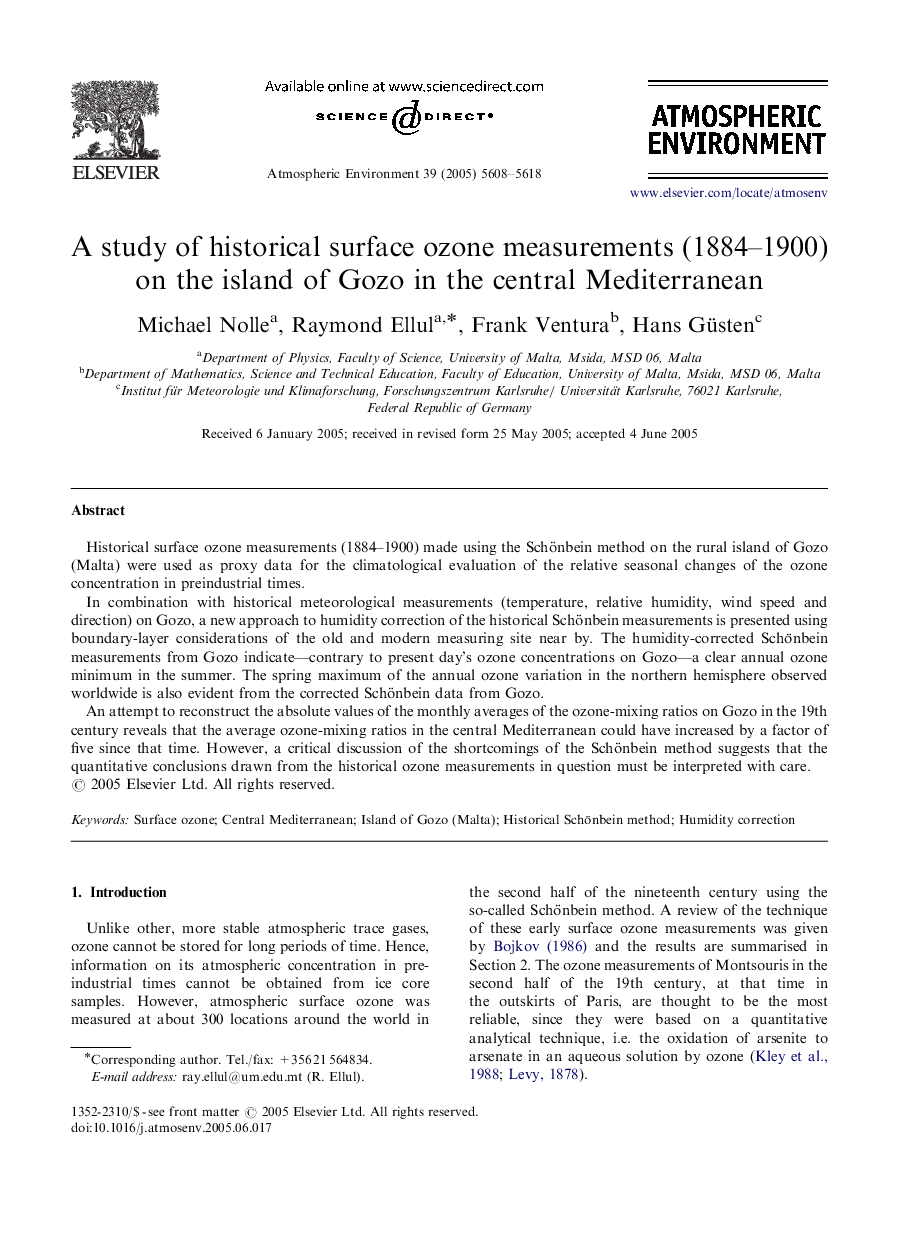| Article ID | Journal | Published Year | Pages | File Type |
|---|---|---|---|---|
| 4444864 | Atmospheric Environment | 2005 | 11 Pages |
Historical surface ozone measurements (1884–1900) made using the Schönbein method on the rural island of Gozo (Malta) were used as proxy data for the climatological evaluation of the relative seasonal changes of the ozone concentration in preindustrial times.In combination with historical meteorological measurements (temperature, relative humidity, wind speed and direction) on Gozo, a new approach to humidity correction of the historical Schönbein measurements is presented using boundary-layer considerations of the old and modern measuring site near by. The humidity-corrected Schönbein measurements from Gozo indicate—contrary to present day's ozone concentrations on Gozo—a clear annual ozone minimum in the summer. The spring maximum of the annual ozone variation in the northern hemisphere observed worldwide is also evident from the corrected Schönbein data from Gozo.An attempt to reconstruct the absolute values of the monthly averages of the ozone-mixing ratios on Gozo in the 19th century reveals that the average ozone-mixing ratios in the central Mediterranean could have increased by a factor of five since that time. However, a critical discussion of the shortcomings of the Schönbein method suggests that the quantitative conclusions drawn from the historical ozone measurements in question must be interpreted with care.
